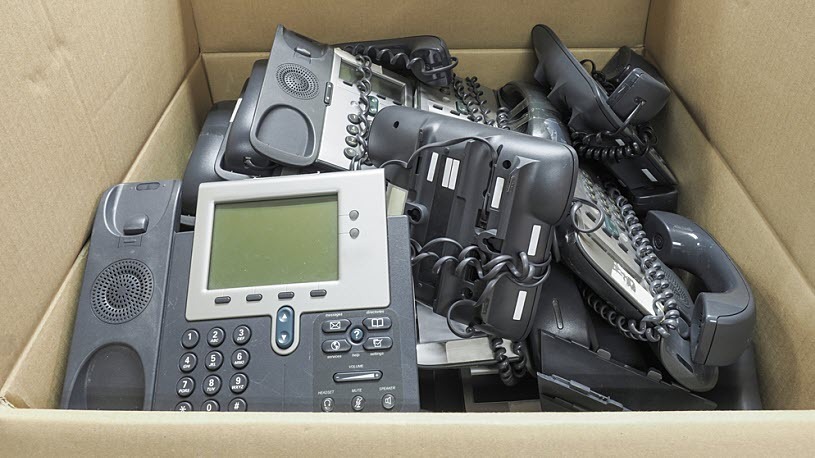10 Ways to Improve Sustainability in the Workplace [2025 Update]

Building a greener, more sustainable workplace isn't just good for the environment. It can also strengthen employee and candidate interest in your company, enhance your reputation and save you money.
Sustainability in the workplace can contribute to an organization's corporate social responsibility (CSR) efforts, helping workers feel better about where they work or are considering working. Don't miss these opportunities to improve sustainability in your workplace in 2025.
Why sustainability at work matters
According to OSHA, many organizations globally have embraced a sustainability mindset to showcase their values, measure impacts and outcomes and boost their competitive advantages. From a cost, recruitment and retention perspective, investing in sustainability in the workplace can benefit not only the environment but also your bottom line, reputation and interest as an employer.
10 ways to create a more sustainable workplace
Here are 10 ways to create a more sustainable workplace in 2025:
1. Switch to green cleaning products
According to the Environmental Protection Agency (EPA), "Cleaning products can present several health and environmental concerns. They may contain chemicals associated with eye, skin or respiratory irritation or other human health issues. Additionally, the concentrated forms of some commercial cleaning products are classified as hazardous, creating potential handling, storage and disposal issues for users. Using green cleaning products can help reduce the human health and environmental concerns of cleaning."
Think about the cleaning products in your workplace. These products may be detrimental to the environment, your employees, your reputation and your pocketbook. By switching to green cleaning products, you can help protect the environment and the people in your workplace. You can also select a cleaning services provider with a green cleaning certification or procure products that meet green standards.
2. Encourage the use of green alternative transportation
If your employees drive gas-powered vehicles to work, your carbon footprint is higher than companies offering green alternatives. Consider installing bike racks for manual and electric bikes while highlighting the environmental, health and wellness benefits of biking. Encourage employees to consider switching if feasible. In addition to biking, you can encourage walking, within reason, carpooling (more on this below) and public transportation. Electric scooters may also be worth considering if your employees live nearby or if your facility is large or part of a complex.
3. Offer a rideshare program
A rideshare program prioritizes the reduction of single-occupant vehicle (SOV) commute trips and miles, supporting the reduction of vehicular emissions. It lets employees carpool to and from or be dropped off and picked up at work, reducing the number of vehicles on the road. Preferably, these programs offer incentives to increase adoption. An example of an incentive is offering an employee $3 each day they carpool or are dropped off and picked up. Consider that employees enrolled in these programs may occasionally need to leave work for various reasons, including family emergencies. Their participation might mean they don't have their own vehicle at work. In these cases, you could consider reimbursing them for the cost of taxis, Uber or other rideshare services.
There are also pretax transportation spending accounts that let employees pay for bus, train or subway passes using pretax funds. For more on this offering, read this article.
4. Invest in electric charging stations and work vehicles
According to the U.S. Department of Energy, "With proper workplace charging implementation, employers can help increase the convenience and affordability of driving electric for their employees" and "demonstrate a commitment to adopting advanced vehicle technologies." These investments can support recruitment, retention and emissions reduction. An electric vehicle (EV) charging station program governs the operation and use of EV charging stations at your workplace, with employees enrolling their EVs for use at available stations according to the program's terms. Also, if you have gas-powered company vehicles, consider phasing them out for electric or hybrid ones when feasible. Check out these EV calculators and tools to discover the differences a switch could make.
5. Partner with green-minded vendors
Does your supply chain ecosystem offer green programs or options? As the buyer, you get to decide who to partner with, so ask vendors what they're doing sustainability-wise before committing. Ask for success stories and evidence of sustainability programs and similar efforts. Hotel, airline, rideshare and rental car companies might have initiatives you can benefit from just by doing business with them. Also, if you use data centers, consider a colocation partnership, where the provider runs its center on renewable energy. Utility providers may offer green options as well. Investigate what's available and choose what makes sense for your business. Some companies might even provide usage incentives and discounts for you and your employees, creating a win for the environment, your workforce and your wallet.
6. Retire desk phones
Desk phones need electricity to work, and often, dozens are in a single office building. They can be a significant source of electricity consumption, and, depending on a person's job, they may not even get used. Regardless, retiring desk phones and moving toward mobile phones or a cloud-based phone system can make a significant difference in your electricity bill and in the health of the environment. Also, don't forget to power down your devices when you're not using them.
7. Go paperless
Are you still distributing paper paychecks? Consider going paperless. You have great options at your disposal. Are you still printing documents for customers and employees? Consider transitioning to digital delivery via a mobile application or company portal. What about that big office printer? Put a recycling bin next to it, sell it if you could go without it or consider a printer that prints when a badge is scanned or code is entered. This feature helps reduce paper waste by preventing needless print jobs. Do you have bulletin boards with promotional flyers, regulatory printouts and other paper notices? Phase them out and replace them with digital display boards as feasible.
8. Introduce energy-efficient lighting
Compact fluorescent and LED lightbulbs cost more than traditional incandescent lightbulbs but use less energy and last years longer, according to Energy.gov. In most cases, you can switch the bulb type without switching the fixture and save significantly.
9. Phase in solar energy
Solar technologies capture light emitted by the sun and convert it into useful forms of energy.
According to the Office of Energy Efficiency and Renewable Technologies, "Solar energy can help reduce the cost of electricity, contribute to a resilient electrical grid, create jobs, spur economic growth, generate backup power for nighttime and outages when paired with storage and operate at similar efficiency on both small and large scales." Businesses are also "opting to install solar panels," and utility providers "are building large solar power plants to provide energy to all customers connected to the grid."
Ask yourself: "What opportunities does my organization have to invest in solar energy?" Check out this solar toolbox and this calculator for a deeper look.
10. Take recycling beyond the blue box
Even if you're already recycling paper and plastic, there could be more to do. In addition to placing recycling bins in your facilities, have you considered upcycling when replacing office appliances, furniture or equipment? Rather than purchasing new pieces, what about purchasing vintage or secondhand pieces? You can also buy compostable tableware for break rooms and cafeterias as you phase out single-use paper plates and plastic utensils.
Become an employer of choice by embracing sustainability
Your employees will notice as you work to build a sustainable workplace. Becoming known as an employer that cares about the environment can have value beyond sustainability's cost savings. It has recruitment, retention and reputational benefits as well. Encourage employees to get involved with championing sustainability in the workplace, and always consider their ideas, too.
ADP's commitment to sustainability
ADP recognizes the importance of environmental stewardship and its responsibility to uphold the highest standards of care, quality and consideration for the global community.
"As leaders, we have the unique authority to create a more sustainable workplace that benefits not only the environment but our people, our community and, lastly, our bottom lines," says Dawn Verrinder, senior director, diversity, inclusion and sustainability, ADP. "By investing in green practices, we can demonstrate our commitment to CSR and create workplaces that promote sustainability and employee satisfaction, impacting retention. From switching to green cleaning products to investing in EVs to partnering with green-minded vendors, we can positively impact the environment and our businesses in many ways. Let's continue using our influence as leaders to create a better tomorrow for our workforces, our customers and our planet."
For more on sustainability at ADP, view ADP's CSR report.



